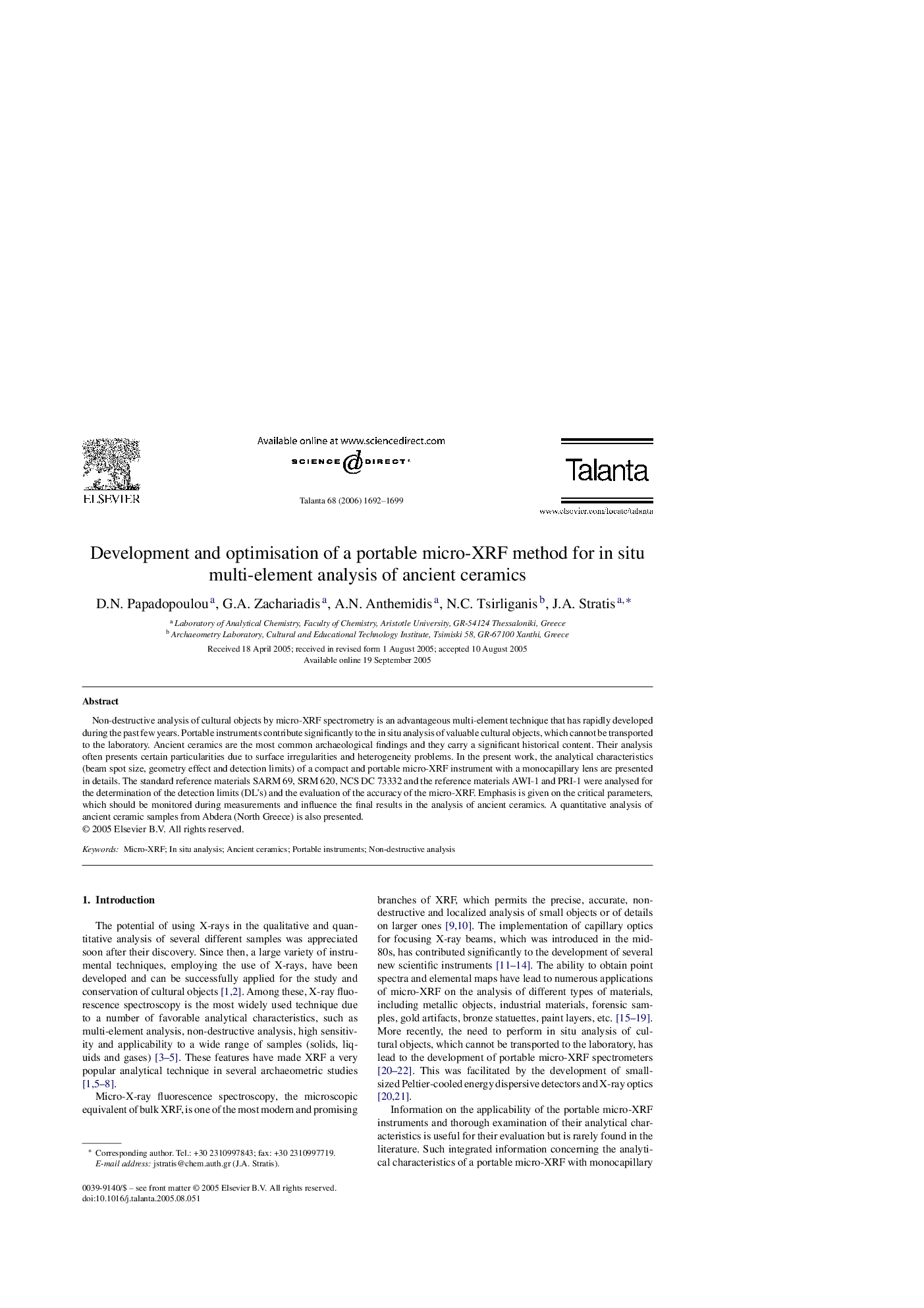| Article ID | Journal | Published Year | Pages | File Type |
|---|---|---|---|---|
| 1246590 | Talanta | 2006 | 8 Pages |
Non-destructive analysis of cultural objects by micro-XRF spectrometry is an advantageous multi-element technique that has rapidly developed during the past few years. Portable instruments contribute significantly to the in situ analysis of valuable cultural objects, which cannot be transported to the laboratory. Ancient ceramics are the most common archaeological findings and they carry a significant historical content. Their analysis often presents certain particularities due to surface irregularities and heterogeneity problems. In the present work, the analytical characteristics (beam spot size, geometry effect and detection limits) of a compact and portable micro-XRF instrument with a monocapillary lens are presented in details. The standard reference materials SARM 69, SRM 620, NCS DC 73332 and the reference materials AWI-1 and PRI-1 were analysed for the determination of the detection limits (DL's) and the evaluation of the accuracy of the micro-XRF. Emphasis is given on the critical parameters, which should be monitored during measurements and influence the final results in the analysis of ancient ceramics. A quantitative analysis of ancient ceramic samples from Abdera (North Greece) is also presented.
